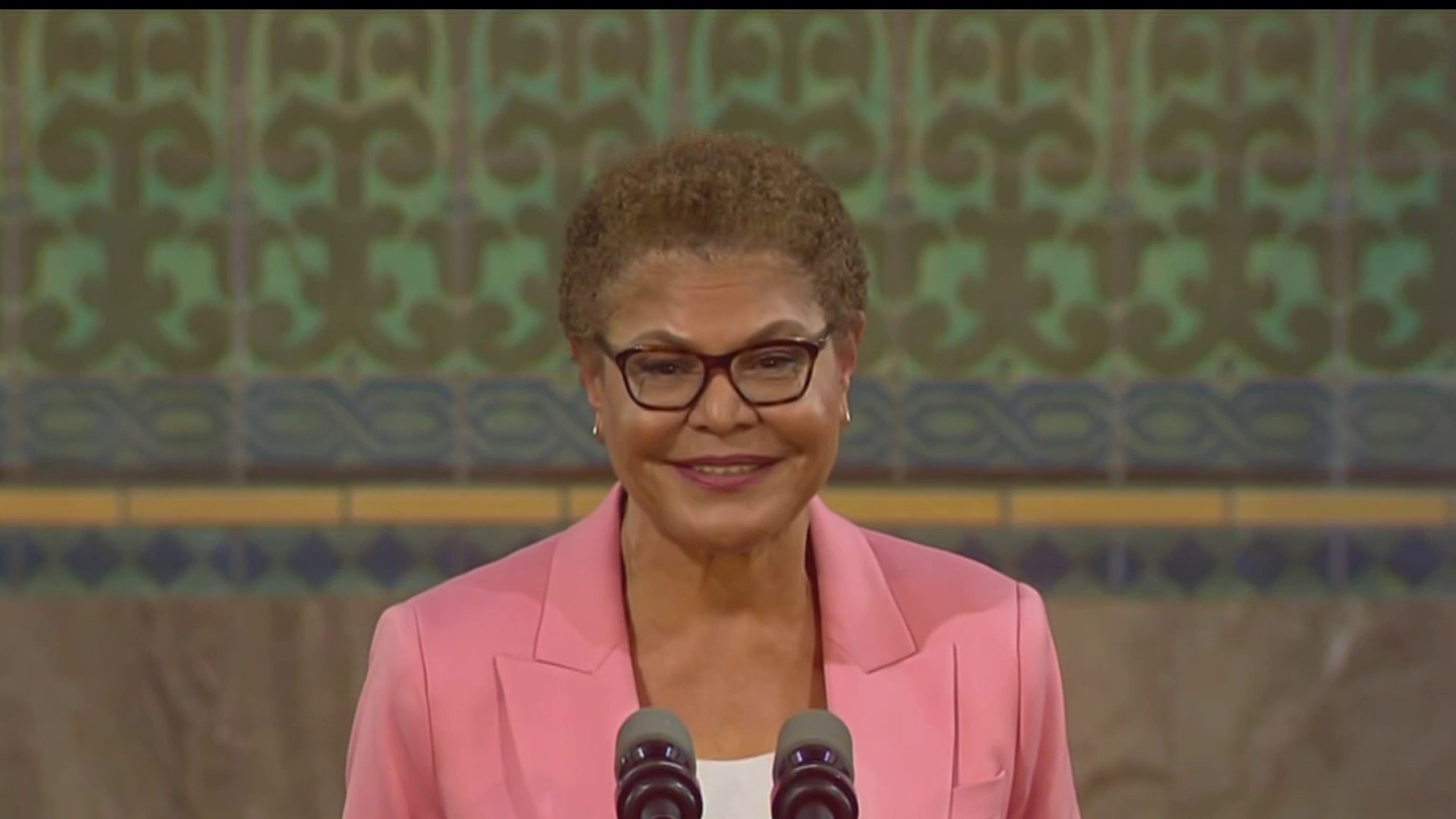Three horses have died in three days at Santa Anita Park while animal rights activists continue to push for a nationwide ban on racing.
Santa Anita officials confirmed the death of the horse, which had been in an off-track training exercise Sunday morning. California Horse Racing Board spokesperson Mike Martin said the horse named Tikkun Olam suffered catastrophic injuries, but the riders and other horses were not injured.
News of the horse's death came while racing protesters were already stationed outside the racetrack Sunday afternoon.
"Three dead horses in three days requires immediate action," PETA spokeswoman Brooke Rossi said. "The California Horse Racing Board was recently given the authority, in legislation backed by Gov. Gavin Newsom, to suspend racing, and now it must do exactly that. There is no sense in the board allowing racing and deaths to continue until it enacts all its own pending regulations and acts on the recommendations of the Los Angeles County District Attorney's office. If it takes the closure of a track to stop the deaths, then close the track."
On Saturday, a 4-year-old gelding named Uncontainable was entered in the first race of the day, but suffered a "fractured right front ankle," according to a post on Santa Anita's website. "Per recommendation from the attending veterinarian, the horse was humanely euthanized."
A day earlier, on Friday, a 6-year-old gelding named Harliss was euthanized after fracturing his right front ankle in a race at Santa Anita after finishing seventh in a field of eight in the seventh race. He was also euthanized under the recommendation from the attending veterinarian.
The three combined deaths in consecutive days brought the number of horse deaths at Santa Anita to at least 42 since December 2018. Five horses have died at Santa Anita since its winter/spring meeting began Dec. 28.
Local
Get Los Angeles's latest local news on crime, entertainment, weather, schools, COVID, cost of living and more. Here's your go-to source for today's LA news.
Meanwhile, officials at Santa Anita released a statement Saturday reaffirming the track administration's commitment to horse safety.
"Santa Anita remains committed to transparency,'' it said. "Our safety statistics and incident reports are publicly available on our website at SantaAnita.com/safety. Home to 2,000 horses, Santa Anita Park is one of the largest equine training facilities in the United States. Horses raced or trained at Santa Anita Park more than 420,000 times over the last year with a 99.991% safety rate."
Santa Anita -- and the sport in general -- have faced increasing pressure from animal-rights activists and elected officials since the deaths at Santa Anita started garnering media attention in early 2019.
The California Horse Racing Board is set to issue a report soon on the deaths.
The Los Angeles County District Attorney's Office concluded Dec. 19 that there was no criminal wrongdoing connected to the deaths, but offered a
series of recommendations aimed at improving safety at racetracks in California.
"Horse racing has inherent risks but is a legally sanctioned sport in California," District Attorney Jackie Lacey said in a statement. "Greater precautions are needed to enhance safety and protect both horses and their riders."
The district attorney called on state regulators to develop safety enhancements to reduce horse deaths, including possible enhanced penalties for rules violations, establishment of a tip line for people to report violations or animal cruelty allegations and mandated inspections of racing and training facilities, and reviews of necropsy and veterinary records of horses that have died.
The report also made recommendations aimed at identifying pre-existing conditions in horses that could lead to breakdowns, establishing track-maintenance protocols -- including special measures during rain or extreme weather conditions, and creation of "safety codes of conduct" for owners, trainers, jockeys, veterinarians and others who care for horses.
The report noted that officials at Santa Anita have implemented a series of safety-improvement measures that "have reduced the number of fatal racing and training incidents."
Santa Anita recently debuted a PET Scan machine to provide imaging of the fetlock or ankle joint -- the most common area for injuries to occur in thoroughbreds -- without horses having to undergo anesthesia, and said it will help to diagnose pre-existing conditions.
"This state-of-the-art technology reflects a new standard of care within Thoroughbred racing -- a standard that puts the health and safety of horses and riders first," said Belinda Stronach, The Stronach Group's chairman and president.



